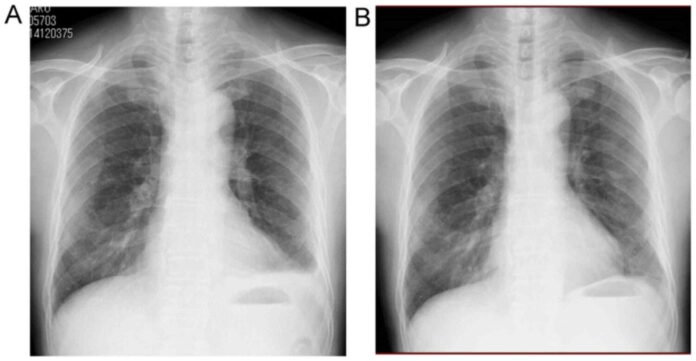Cancer is widely acknowledged to be a deadly, yet occasionally hard-to-notice disease. There are hundreds of different forms of cancer, each of which is associated with different symptoms, and different individuals may present different symptoms based on the stage of the disease and unique individual factors.
On top of that, the early symptoms of cancer can easily be confused with symptoms of other diseases, many of which are mild and relatively low stakes.
With this in mind, it’s important to recognize symptoms that collectively indicate the presence of certain types of cancer, like pleural mesothelioma.
What are the symptoms of pleural mesothelioma? And when does it make sense to see a doctor?

What Is Pleural Mesothelioma?
Pleural mesothelioma is one particular type of mesothelioma, which itself is a rare and aggressive form of cancer. Mesothelioma can affect different parts of the body, but it most commonly affects the lungs; pleural mesothelioma, specifically, affects the lungs.
When a person is exposed to a material called asbestos, they may breathe in small fibers that lodge themselves in the linings of the lungs. Over time, these jagged shards can cause cellular damage, which eventually leads to the development of cancerous cells.
Pleural mesothelioma is almost always fatal, though there are some treatment methods that can significantly prolong your lifespan and quality of life.
Symptoms That Could Be a Sign of Pleural Mesothelioma
What are the most important symptoms of pleural mesothelioma to be aware of?
- Shortness of breath. Many people with pleural mesothelioma find themselves short of breath in unnatural circumstances. Working out heavily will leave anyone out of breath. Even mildly physically exhausting activities, like climbing multiple sets of stairs, can leave you short of breath. But if you find yourself short of breath inexplicably, it’s probably a sign that something is wrong.
- Persistent coughing. Most of us cough on a daily, or nearly daily basis. But if you have a cough that doesn’t seem to go away, or if you’re not sure how it developed, it could be an indication that you have an affliction causing it.
- Chest pain. People with pleural mesothelioma also report chest pain frequently. Chest pain, along with shortness of breath and persistent coughing, are all symptoms of pneumonia and other illnesses like the common cold. This can make it hard to differentiate between problems that require no immediate medical attention and more severe afflictions.
- Lower back pain. Perhaps more noticeably, pleural mesothelioma is associated with lower back pain. Again, this back pain seems to emerge out of nowhere, with no reasonable explanation for it.
- Mysterious weight loss. Losing weight can be a good thing for your health, if you do it deliberately and in controlled circumstances – especially if you’re severely overweight to begin with. However, if you seem to lose weight without trying, or if you lose weight to the point where you become underweight, it could be a bad sign.
- A hoarse voice. People with pleural mesothelioma sometimes have a hoarse voice. You may find it hard to speak effectively, or your throat may be sore in your daily interactions.
- Swallowing difficulty. Along with the hoarse voice, you may have difficulty swallowing.
- General fatigue. This type of mesothelioma can also produce a general, physical fatigue. You feel tired all the time, even after a good night’s sleep.
- Night sweats. Do you wake up in a pool of sweat in the middle of the night? If you’re at risk, it could be a sign of pleural mesothelioma.
- Fluid buildup in the pleural space. Though you’ll likely need a doctor and some medical equipment to see it, pleural mesothelioma is usually associated with fluid buildup in the pleural space.

Were You Exposed to Asbestos?
Almost all mesothelioma cases are a direct result of exposure to asbestos. Accordingly, if you avoid exposure to asbestos, you can reduce your risk of developing this type of disease to nearly zero. Fortunately for us, asbestos is no longer widely used as a construction material, but if you’ve already been exposed to asbestos, it may be too late.
Risk Factors
While asbestos exposure remains the primary cause of mesothelioma, it’s important to consider other risk factors that may contribute to the development of this disease. A family history of mesothelioma can suggest a genetic predisposition, potentially increasing individual risk. Certain genetic mutations have also been linked to a higher susceptibility to mesothelioma, indicating the role of hereditary factors. Additionally, lifestyle factors and overall health can influence risk levels. Recognizing these factors alongside asbestos exposure provides a more comprehensive understanding of mesothelioma risk.
Diagnostic Tests
To confirm a diagnosis of pleural mesothelioma, a series of diagnostic tests is essential. Imaging tests like X-rays, CT scans, and MRIs are the first steps, offering detailed pictures of the chest and abdomen to identify abnormalities. If these images suggest mesothelioma, a biopsy is typically the next step. During a biopsy, a small tissue sample is removed from the affected area for examination under a microscope. This procedure is crucial for a definitive diagnosis. Other tests, such as blood tests, might be used to assess overall health and rule out other conditions. The combination of these diagnostic methods allows doctors to accurately diagnose and stage the disease, informing the most effective treatment plan.

The Importance of Seeing a Doctor Early
If you’ve been exposed to asbestos, and you see multiple signs of pleural mesothelioma, it’s important to see your doctor right away; in other words, don’t procrastinate. The earlier you see your doctor, the earlier you’ll be able to get a diagnosis, and the earlier you can start treatment. Early treatment is imperative to see the best possible results.
Pleural mesothelioma is extremely deadly, and a disease that everyone wants to avoid. But if you’ve already been exposed to asbestos, your risk of developing this deadly disease is much higher than baseline. Pay close attention to your physical health, including lung and respiratory symptoms you develop, to maximize your chances of getting effective treatment.









